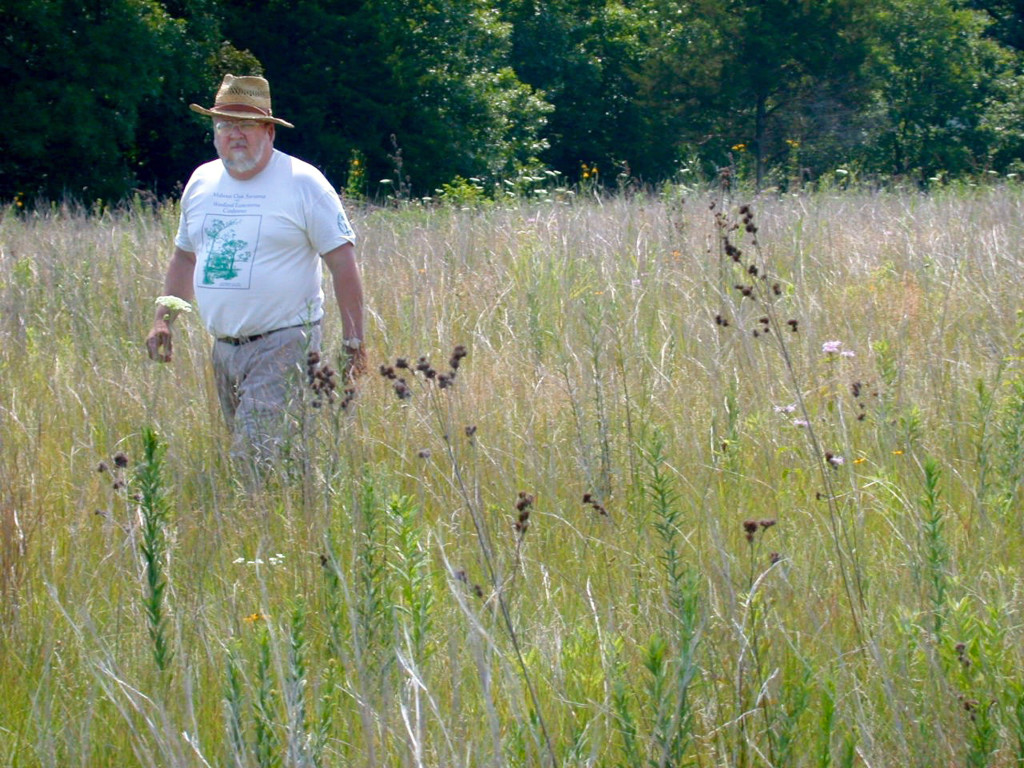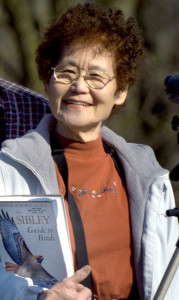A Legacy for Future Generations
It was a summer day in 1990 that I piled into a car with several folks and drove up into Marshall County to explore some natural areas. We were off to meet someone who had a lot of local knowledge about native prairie. Little did I know that the person we were to meet that day would become a mentor and life-long friend. Many of you probably know Maury Brucker, but it was my first opportunity to spend time with him in the field.
Maury took us to see property owned by Charlie Cooper. As we bounced along a rural road that winds through the hills west of Henry, along the rugged bluffs of the Illinois River Valley, Maury told us a bit about Mr. Cooper. It turns out that Charlie had a life-long interest in nature and birds, and had become quite versed in prairies in particular. We met up with Charlie who was out standing at the edge of a bean field beside an old gate that came onto his property. Behind him, down the lane we could see the hint of a blue-green field dominated by Little Bluestem, a prairie grass that sends up its flower stalks in August.
As we walked down the lane, Charlie told us the story of his property. It had been used as grazing land since the mid 1800s. The majority of the property was too hilly to farm, so only a few acres were planted in crops. Charlie became the owner sometime around 1970. He burned an old brush pile soon after he became owner and to his surprise, “The fire simply marched across the dry pasture, consuming grass and brush on its way down into the woods. The next year, I saw flowers blooming and thought they were really beautiful, so I called Irene Cull, who was a botanist with the USDA lab in Peoria. She really helped me understand just how rare this habitat was and helped me manage the prairie and that has allowed it to become what it is today.”

In this 2002 photo taken by Mike Miller, Maury Brucker walks through a restored prairie on land he and Emiko Yang recently gave to Peoria Audubon Society. Yang, seen in portrait photo, and Brucker worked on the 22-acre tract for more than 20 years restoring the high quality prairie and savanna. They had the land designated an Illinois State Nature Preserve to provide legal protection in perpetuity.
Maury began helping Charlie with the prairie a couple of years before this 1990 visit. Around 1993, Charlie decided that it was time to start thinking about the future of the prairie, and he saw in Maury someone who would carry on the tradition and keep the prairie healthy. Over the next 20 plus years, Maury Brucker and Emiko Yang became owners of the 22-acre property. They had the highest quality natural areas dedicated as an Illinois State Nature Preserve, a process that offers legal protection to the land in perpetuity. They worked with the Natural Land Institute to have a botanist document all of the species of plants found on the site. They wrote grants to have a restoration ecologist work on restoring the woodlands and prairies by removing exotic and invasive species. They also converted the 3-acre former crop field into a high quality prairie restoration.
In the 20-plus years since Maury and Emiko took over stewardship of this gem, it has shined and has become a wonderful example of native Illinois savanna and prairie. Now, Maury and Emiko are thinking about the long-term future of this natural area. So just recently, Maury and Emiko turned to the Peoria Audubon Society.
Serving as a land trust, Peoria Audubon accepted the gift of the property to assist in its mission of preserving high quality natural areas along the Illinois River Bluffs ecological corridor. Maury and Emiko also provided a maintenance endowment to provide for future needs in the care of this rare native habitat. It is a wonderful legacy and the members and board of Peoria Audubon feel privileged to play a role into the future.
This high quality natural area sits on an important migratory path for numerous species of neotropical songbirds as they migrate from their breeding habitat in the north to their wintering grounds in Central and South America. Dozens of species of warblers can be found in the preserve during spring and fall migration. Resident species such as Eastern Bluebird, Indigo Bunting and Baltimore Orioles are found nesting on the site. Over 160 species of birds utilize this important natural area. It is a true legacy that Maury and Emiko are sharing with the rest of us. It is a prime example how individuals can make a huge difference in the preservation of nature.
For the immediate future, access to this site will be by permission of Peoria Audubon Society during scheduled events and programs. Information on the Oak Bluff Savanna Nature Preserve, and when scheduled outings will take place will be posted on the Peoria Audubon’s website, http://www.peoriaaudubon.org.


Recent Comments